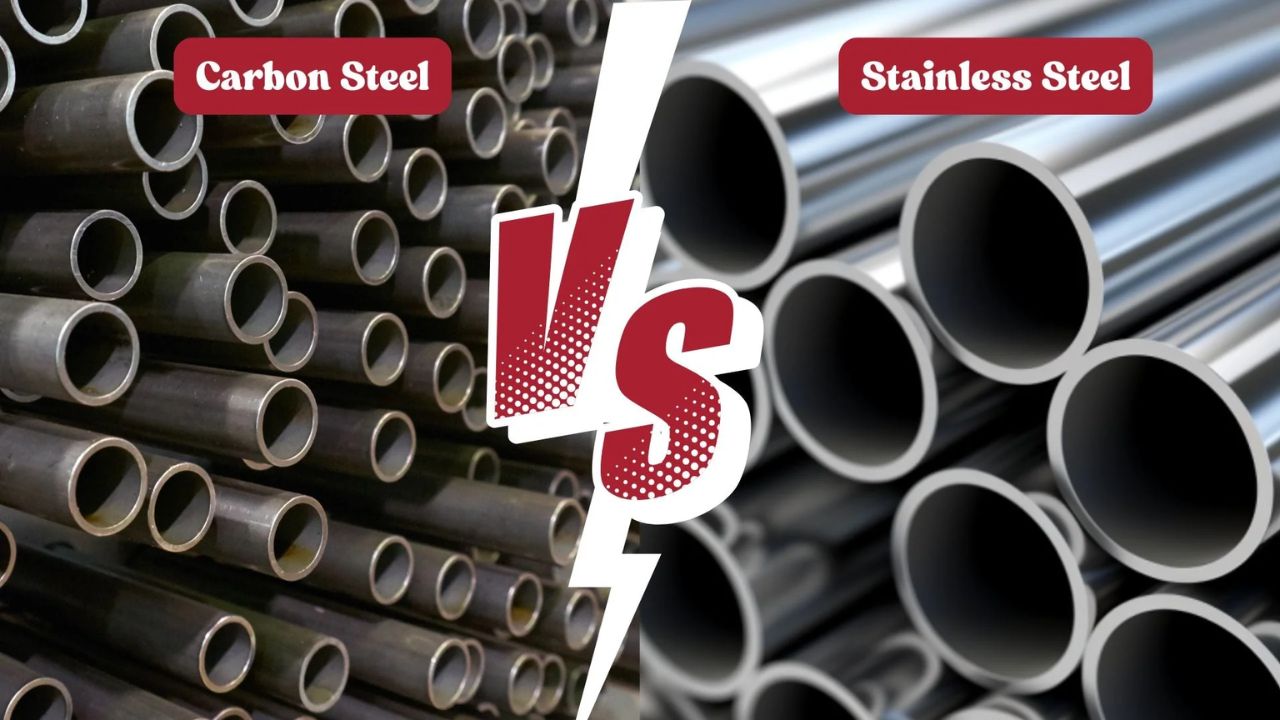Carbon steel and stainless steel are the most prevalent forms of steel. Carbon steel is esteemed. It is because of its strength, hardness, and low cost, whereas stainless steel is admired because of its resistance to corrosion, durability, and also due to its beauty. Good knowledge of the multiple applications of Carbon steel and stainless steel assists the industries in knowing what type of steel is to be used in the application.
Applications of Carbon Steel
Carbon steel is mainly made out of iron and carbon. The examples of the given steel type include low, medium and high carbon steel. It is a cheap, high-tensile-strength material commonly used in heavy-duty applications.
Building and Projectiles
Carbon steel is extensively employed in the construction industry to manufacture structural framework, beams, columns, and reinforcing bars in the construction of buildings, bridges, and tunnels. It offers the necessary strength and stability to hold weighty structures and to sustain huge loads. The mechanical properties of carbon steel render it the best option in events where price-effectiveness and strength are considered of utmost importance compared to corrosion properties.
Manufacturing, Mechanical Engineering
Carbon steel finds its way into very large-scale applications in the manufacturing industry, producing the tools and machine parts, as well as automotive parts. Gears and axles, as well as shafts, are made out of medium-carbon steel because it is tough and generally durable. Cutting tools, springs, and high-strength wires are produced using high-carbon steel, which is hard steel. Heat treatment procedures are used to increase its hardness and wear resistance, and its application to the use of the eye that requires an extended service life.
Energy and Industrial Applications
Carbon steel metal is used in the manufacturing of boilers, pressure vessels, and oil, gas and steam pipelines in the energy industry. This is because it has strength under high temperatures and pressures to resist its use in such critical applications. Also, carbon steel is introduced in the construction of ships as well as heavy machinery because it offers the strength to withstand strong working conditions.
Applications of Stainless Steel
The difference that exists between stainless steel and carbon steel is attributed to the presence of chromium, which, within it, constitutes a guard layer of oxide impervious to rust and corrosion. Such special quality has made stainless steel material popular where exposure to wet, occasionally chemical, and salty environments is encountered.
Construction and Architecture
In contemporary architecture, stainless steel is employed as a structural and decorative material. It is mostly used in handrails, roof coverings, cladding and facades because of the shininess and the durability of performance. With minimum maintenance, resistance against weathering abilities, and a maintained aesthetic value even with the rest of the time, stainless steel structures make them the best choice of construction where many people are involved in high places.
Food, Beverage and Pharmaceutical Industries
Stainless steel can also be applied in industries that require some hygiene and cleanliness. It finds application during the manufacturing of kitchen wares, food processing equipment, storage equipment, and pharmaceutical equipment. It does not contaminate as its surface is non-reactive, so the product does not contaminate. Stainless steel is also the material of choice in areas with low safety standards since it can be sanitized easily and regularly.
Marine and CHE Publishing
Ship fittings, propeller shafts, offshore platforms and coastal structures are other applications of stainless steel in marine settings. To withstand serious saltwater corrosion, it is highly resistant to marine wear, unlike other alloys. Similarly, in chemical plants, reactors, pipes, and valves that are exposed to corrosive materials are constructed of stainless steel. Its ability to resist acid and chemical damage renders it reliable and safe in the course of industrial operations.
Medical and Automotive
In the automotive industry, stainless steel is applied in exhaust systems, in trims, as well as in structures where corrosion resistance and strength are required. Implants, surgical equipment, and hospital equipment have been made of stainless steel, such is an example of a biocompatible and easily sterilizable material. It is a treasured substance in the medical field and surgery because it is very strong and sterile.
Conclusion
Carbon steel and stainless steel are critically important in the present industry. The benefits and uses of carbon steel to infrastructures and heavy industry, democracy and economy, its rack strength and availability: stainless steel, on the other hand, values and longevity, safety, and hygiene in the architecture, health, and food production sectors. The understanding of the differences and usage aids the engineer and manufacturer to determine the right material to use on the right project to achieve durability, efficiency and reliability when using that material.

